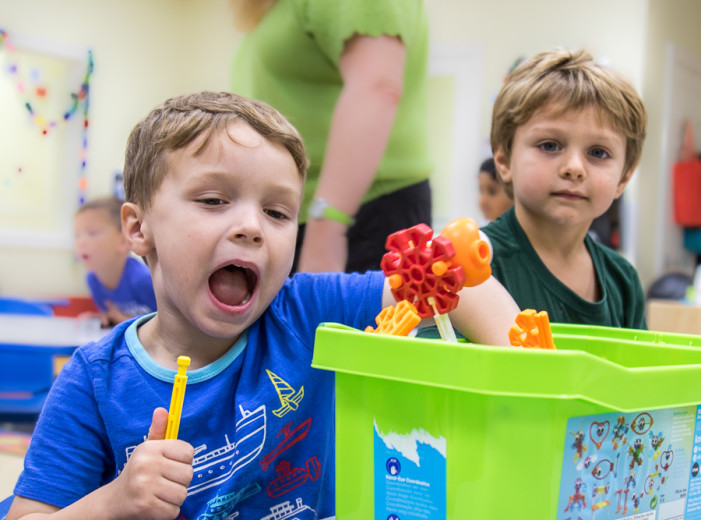By Susan Carroll
Review Writer
Kids at the Goddard School were working hard to play with new toys last week.
The Goddard School was one of the sites of the Preschooler-Approved Toy Test last week. Goddard School, Inc. is a nationwide private preschool and daycare with a location on Silverbell in Lake Orion.
“Providing meaningful and play-based educational experiences, such as the Toy Test, to children at the Goddard Schools creates a wonderful environment to further develop their social and cognitive skills,” said Dr. Craig Bach, GSI’s Vice President of Education. “Additionally, by exploring a range of toys that have been carefully evaluated by our early childhood education team, children help provide insight into both the educational and ‘fun’ value of some of the most exciting new toys on the market.”
Toy companies that want to have their toys tested through Goddard Schools follow an application process. All entries are evaluated by the GSI toy testing committee that consists of early childhood education experts.
Toys chosen by the committee to be finalists are sent to the 50 participating Goddard schools for the study. To be eligible to participate in the field test, toys must inspire playful learning and be educational.
This year, toys were submitted from companies such as Lakeshore Learning, Hape, Faber-Castell, K’NEX, Fat Brain Toys, Peaceable Kingdom and Learning Resources.
The toys are set up in age appropriate classrooms, with toy-testers ranging in age from infants to six years old. Twenty-five toys were tested throughout the nation during the week of Sept. 25, including the Goddard School at 935 E. Silverbell Rd.
During scheduled play-time the teachers and early childhood education experts observe and interact with the children as they play with the toys. Each toy is evaluated on this interaction and child-initiated play.
Toys must stimulate creativity while keeping the child’s interest. The toy must be educational while maintaining the child’s creative interests over a period-of-time, support skill development and learning, be affordable ($40 or less), be age appropriate and meet health and safety guidelines.
In the older-age classrooms, teachers ask questions to encourage feedback, such as what the kids like about the toy.
In the younger classrooms, the teachers encourage the kids to play with the toys and then watch and note how long the toy maintains a child’s interest. The teachers also look for tactile sensation, interaction with others and if the child goes back and plays with the toy after setting it down.
At the end of the study, the children vote on which toys they like the best – which ones are their favorites. This is done in many ways and is at the discretion of the teacher. They may be asked to vote by a raise of the hand, by standing behind the toy they like best or verbalizing their feelings.
Teachers submit their findings on ballots for each toy tested. Once the information is compiled, the official Top 10 Pre-Approved Toys for the holiday season are chosen and announced nationwide.
For more information about Goddard Schools and the toy testing, visit goddardschool.com.


Leave a Reply